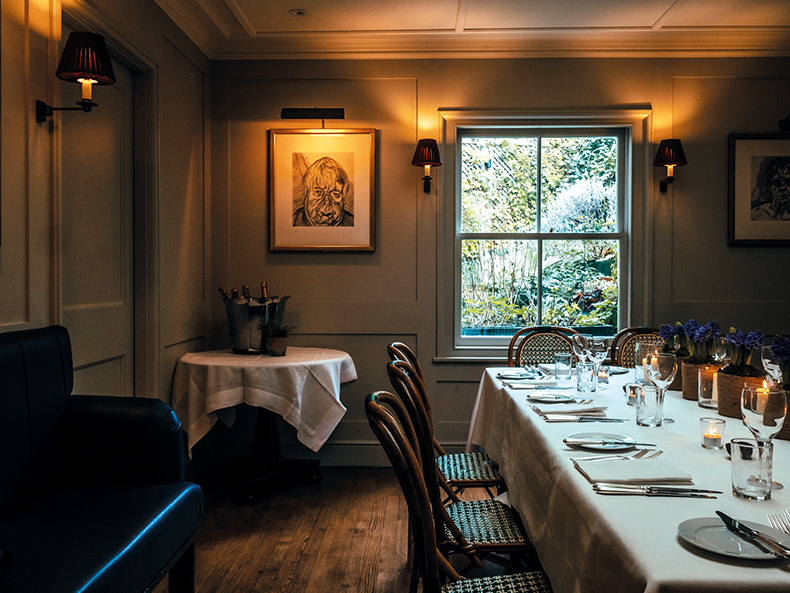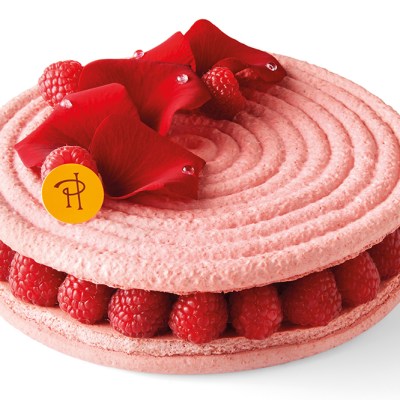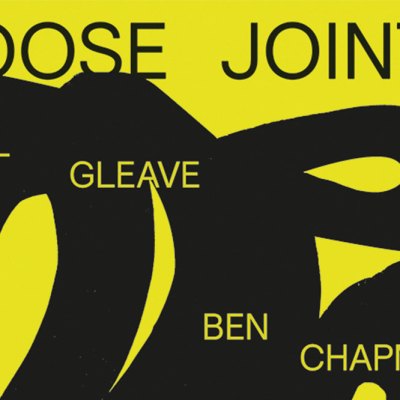From the September 2024 issue of Apollo. Preview and subscribe here.
Clarke’s is not a restaurant that is easy to place. It’s in west London at a time when the capital’s press regards east London as the centre of dining gravity. It does not have an easily identifiable clientele. And it is mercifully unbothered about chasing Instagram likes. Yet despite this elusiveness, the restaurant is sure of itself. There is no hysteria, no clamour; it just does what it has always done. This year it celebrates its 40th anniversary, which is quite an achievement in the restaurant business.
At the head of Clarke’s, making sure that each menu is as it should be and each plate of food as perfect as it can be, is Sally Clarke. She is a quietly formidable figure, at once approachable and measured. It seems unlikely that contradicting her would go well.
She founded the restaurant after returning to England from a formative time in California, where she worked at restaurants including Michael’s in Santa Monica and, more importantly, ate at Chez Panisse in Berkeley. Chez Panisse has a curious reputation. Its founder, Alice Waters, is now both restaurateur and campaigner. While the restaurant opened as part of the counterculture, offering farm-to-table food that stood out from the more processed or just complicated food of 1970s America, her advocacy for organic food and sustainable school lunches has made her almost part of the establishment. One of the most famous things Waters has ever served is a whole peach as the last course of a three-course set menu; when questioned about this approach, she asked how it could possibly be improved upon. From the restaurant’s inception, Waters collaborated with friends and neighbours – David Lance Goines’s designs for signage and books, a Californian version of art nouveau, are inextricably entwined with the restaurant’s image.
‘Alice sits on my shoulder every day. She tells me what to do and what not to do,’ Clarke says. Her restaurant is no imitation of what Waters created in California, but rather a London expression of the philosophy behind Chez Panisse. Like Waters, Clarke is keen on a set menu – though over time she has added à la carte options. The differences are most apparent in the walls. The rooms of Panisse are softly brown – wooden beams, wooden chairs and natural fibres. Clarke’s feels a little more chic: lighter floors, white walls and art all around – a giant silver spoon and fork, a Howard Hodgkin print, a Bridget Riley, maps by Grayson Perry, David Hockney’s portrait of restaurateur Peter Langan (so generous with his advice, Clarke says). And in the smaller garden room, where the large sash window looks out on to the perfect cottage garden, are all the etchings by Lucian Freud.
Freud ate breakfast at Clarke’s every day, and lunch quite often too. His former studio is round the corner. Clarke and Freud struck up such a friendship that she sat for him once or twice a week for ‘about two years’. They would leave the restaurant when he had eaten breakfast, ‘and when he felt it was time to finish the sitting he would say, “I think that’s good for the day.” And then about an hour later, I’d see him in the restaurant having lunch.’
The garden room at Clarke’s, with Lucian Freud’s etching Donegal Man (2007), on the wall. Photo: Joe Clarke

In an obituary for the Guardian Clarke wrote, ‘I planned to spend my “sitting” time writing future menus in my head […] but I soon realised that I was wishing to work as hard, and as intensely, as he was.’ Asked about this now, she says, ‘I suppose it wasn’t work but the effort. I felt it was a mirror arrangement and I was putting as much energy into the fact that I was doing what he was asking me to do, or sitting or moving my head slightly, whatever it was.’ Looking at Freud’s portraits, the artist’s view of the sitter is so relentless that it’s hard to imagine what it would feel like to be subjected to that demanding gaze.
The act of painting presented not a different man from the one in the restaurant, but a different relationship. In the studio he was ‘acutely focused on mixing paints and the palette and which brush to use, and the light. He was at the end of his life, he was old, so he needed to sit down and take lots of breaks and drink lots of water.’
In some ways it seems entirely natural that Freud chose Clarke’s as his regular breakfast and lunch spot. While Clarke’s looks like a neighbourhood restaurant it is, in a way, a club – but one that is open to anyone. As Clarke says, ‘We’ve never been a cliquey restaurant. We’ve never been just the artists or just the bankers or just the Kensington ladies. It’s always been a lovely, healthy mix, so I don’t think we’ve ever gone out of fashion.’ The artists that Clarke mentions include Bridget Riley, who not only has work on the wall but lives down the road and pops in for lunch sometimes.
Another regular is the gallery owner Alan Cristea. Clarke was introduced to him by Michael McCarty, the founder of Michael’s, where she worked in California, who used his restaurant to show off his art collection. When Clarke opened her restaurant Cristea was a supporter from the outset. ‘He was incredibly generous to me in the beginning,’ she says, ‘and he lent me things. He said, “Don’t worry, if I have a client who wants to buy a piece, I’ll just come and take it off your wall. I’ll swap it for something else you’d like.”’ Works by Patrick Caulfield and Peter Blake soon hung on the restaurant walls. While the restaurant currently shows works by a different group of artists, there is still a feeling that everything in the room is exactly comme il faut. And it’s a feeling that Clarke exudes; whatever she does, it is done just as it should be.
Take the menus, written by hand twice a day. ‘It’s not just about the dishes,’ she says, ‘it’s how they’re described. And I do think that’s one of my most important jobs in the restaurant.’ It is one of the mysteries of menu-writing that there are trends within this specialist field. Aficionados will know that contemporary restaurants are quite spare in their descriptions, often just three words for a dish. ‘We’re a tiny bit more wordy,’ Clarke says.
She tells a story about when she was a child and her mother placed something on the table for breakfast. ‘I said, “Mummy, is this butter?” She said, “Yes, of course, it’s butter.” And I tasted it and looked at it, and I said, “Mummy, I think this is margarine, isn’t it?” And I tasted it again. And I knew it was margarine. And I said, “Mummy, if I am going to have a life in food, I need you to be honest with me about what goes on the table.”’ It is this taste and commitment to honesty that has allowed her to create a restaurant that has thrived for 40 years. And perhaps that’s why the restaurant is so intricately linked with the artists of London. ‘In a way, when you look at a painting or a piece of sculpture, you instinctively know whether it’s your taste.’ And Sally Clarke happens to have very good taste.
From the September 2024 issue of Apollo. Preview and subscribe here.


